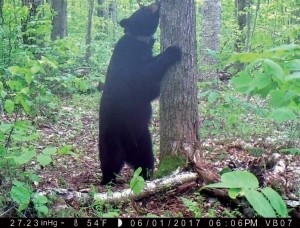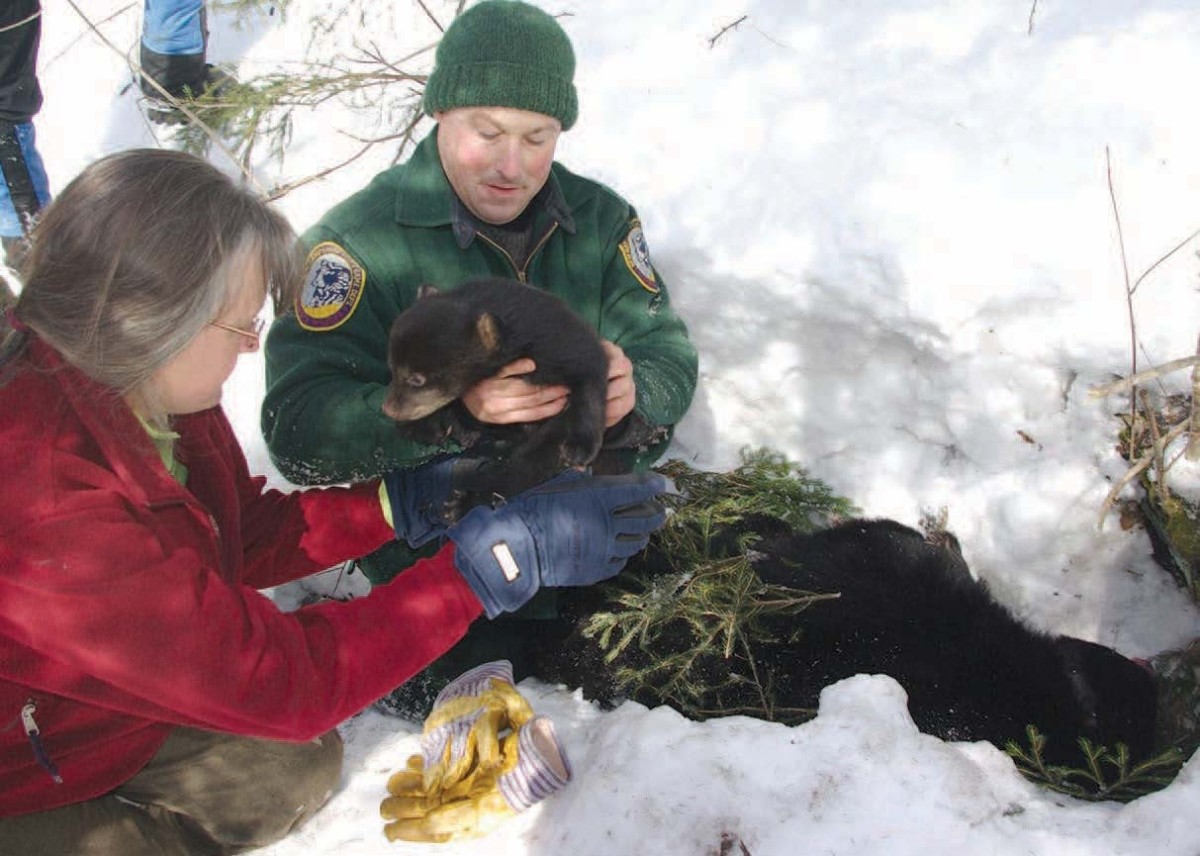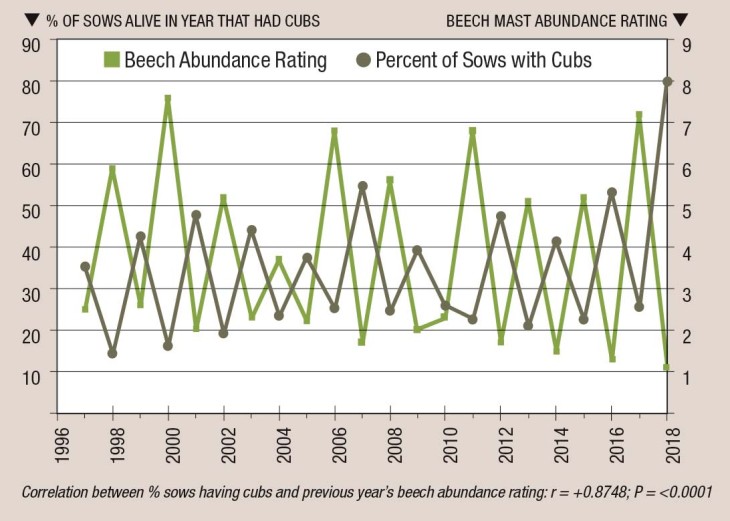
As late spring transitions to summer, we typically think of our northern woodlands as bursting with abundant life. But for bears, June into early July is actually a very lean time of year. Early spring food diminishes in value as spring wanes: the emergent, succulent vegetation of spring and the buds and new leaf growth of aspen, ash, oak, and maple are becoming less palatable, and the leftover mast from the previous fall, such as beechnuts and acorns, are beginning to sprout. Soft mast – raspberries and blueberries, followed by blackberries – doesn’t become abundant until around mid-July to August.
“June is a challenging time for bears, from a food perspective,” said Andrew Timmins, black bear biologist for New Hampshire Fish and Game. “It’s also the month we begin to see an increasing trend in bear-human conflicts.”
Food abundance is a key driver of many population trends that Timmins monitors for the state. For example, beechnut production in the fall is closely correlated with reproductive success – the more abundant beech mast, the higher the number of cubs born the following spring (see chart). A bear’s home range and movement patterns may shift depending on food availability from year to year, and is influenced by multiple factors that include forest management practices, the diversity and quality of habitat, and weather.

Biologists use radio collars to monitor bear survival, home range size, habitat use, reproductive success, litter size, and the survival of cubs over time. Data collected from these collars are used to develop some of the metrics used in population modeling. These models show trends over time and help wildlife managers determine whether or not the state is meeting its management objectives.
“Female bears are most valuable for tracking bear population dynamics because their survival and productivity drives growth or decline,” said Timmins. “The more dominant males breed multiple females, so younger males don’t play as much of a role in population rate of change.”
In the New Hampshire bear monitoring program, GPS data loggers on collars are used to record multiple locations per day that provide insight on daily and seasonal locations and movement, different types of habitat used throughout the year, and home range size (see map showing the movement of one tracked bear over the course of one month).
If a collar fails to record any new GPS points over the course of 12 hours, this signals something has gone wrong, either mortality for the bear or a dropped collar (collar drops and malfunctions are generally infrequent).

When bear-human conflicts occur, they typically originate from human behavior. If people have food attractants near their house (or campsite in parks or recreation areas – a common issue mid-summer into fall), they are drawing bears into the potential for conflict, which can lead to a bear being shot by a disgruntled homeowner, lethal removal by the management agency (due to habituated behavior caused by routine access to human-related food attractants), or increased fatalities by vehicles.
“Bears are just trying to do what they do best, and that’s find high-quality food,” said Timmins. “It’s up to us as a society to be proactive, to not attract them.”
In 2020, the New Hampshire bear population experienced a high harvest, partly because of lack of food resources – bears travel farther to find food during lean times – thereby becoming more vulnerable to hunters, and partly due to increased hunting pressure.

Years of collecting data on radio-collared bears show the New Hampshire bear population is likely more robust than historically thought; biologists are documenting larger litter sizes and bears breeding at a younger age. They’ve also found that if a sow loses cubs during spring or early summer (born in January, the cubs typically stay with the mother bear for 18 months), she may breed that same summer and have cubs the following January. This represents a significant reproductive contribution. The resilience of the population depends on good-quality habitat, corresponding natural food abundance, and the ability of bears to exploit landscapes and food availability.
Timmins attributes the success of New Hampshire’s bear population to proper management of diverse habitats; perhaps one year a particular area may not have a good fall nut crop, but that same area may have good soft mast crops. Current trends to manage for young forests by large and small landowners can benefit bears by providing earlier successional foods, as berry-producing species invade disturbed areas. However, this needs to be balanced with the proper management for mature forests for production of fall mast that is high in fat and protein – both habitat types are important to bears at different times of the year.
Additional Resources
In 2021, 40 orphaned black bear cubs were released back to their natural habitat in New Hampshire and Vermont from the Kilham Bear Center in Lyme, New Hampshire. Read more about their work here.
New Hampshire Wildlife Journal (December 2019) featured an article by Ben Kilham on bear behavior, why cubs are orphaned, and ways to avoid conflict.
Something’s Bruin in New Hampshire offers myriad tips on living with bears and avoiding conflicts.

